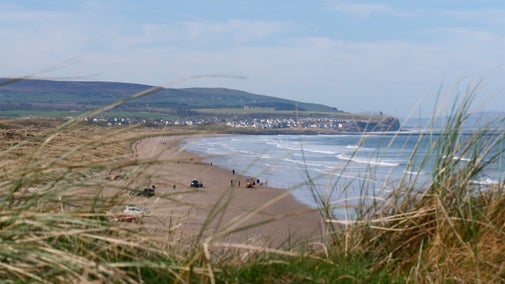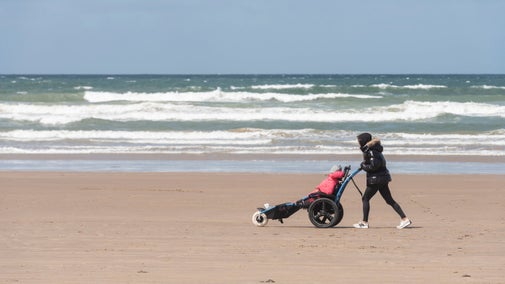
Become a member
Join today and help protect nature, beauty and history – for everyone, for ever. Enjoy access to more than 500 places with National Trust membership.
Miles of golden sand
118 Strand Road, Portstewart, County Londonderry, BT55 7PG

Spend the day on one of Northern Ireland’s finest beaches. Stride out for a walk along the strand, wander through the 6,000-year-old dunes and spot seasonal wildlife. Dip you toes in the water or brave the waves with your bodyboard. There's plenty of things to do at the beach and the wildlife haven in the dunes.

When visiting Portstewart Strand, it is important you are aware of some of the safety procedures to ensure a safe visit to the reserve. Here are a few tips on how to stay safe and ensure this landscape stays beautiful.

Portstewart Strand is proud to be an Inclusive Beach where people of all ages and abilities can take part, have fun, and be included. Working in partnership with Mae Murray Foundation, we want to make all our places on the north coast inclusive and ensure people of all ages and abilities can enjoy them.

Dogs are welcome on Portstewart Strand and with two miles of golden sand to enjoy, there are plenty of opportunities for walking and splashing along the beach. Portstewart Strand is a one pawprint rated place.


Join today and help protect nature, beauty and history – for everyone, for ever. Enjoy access to more than 500 places with National Trust membership.